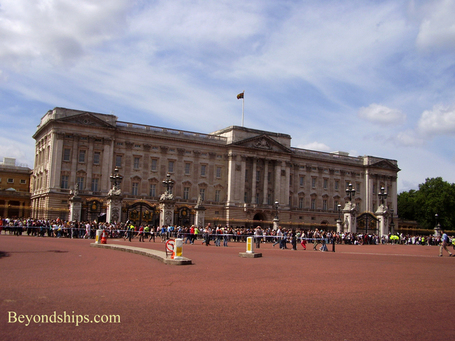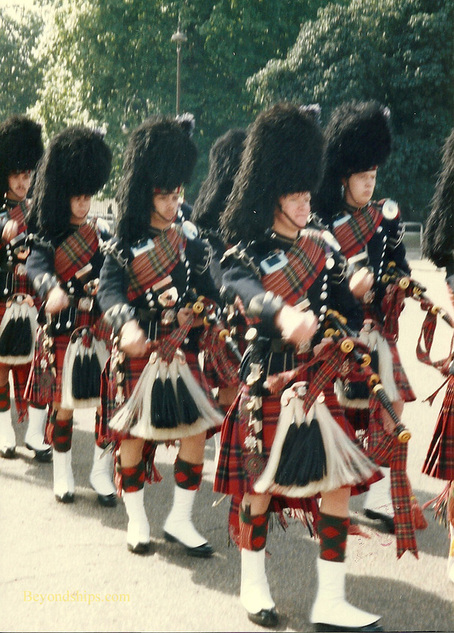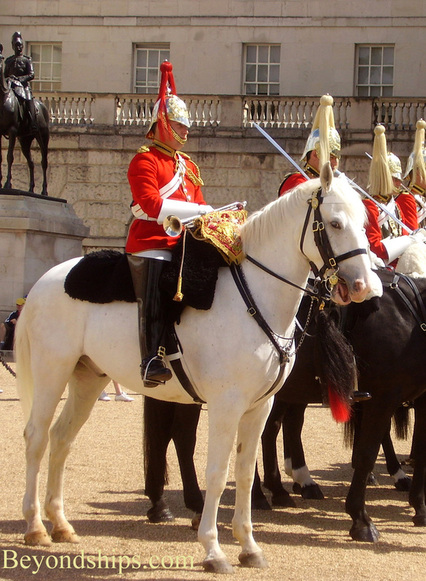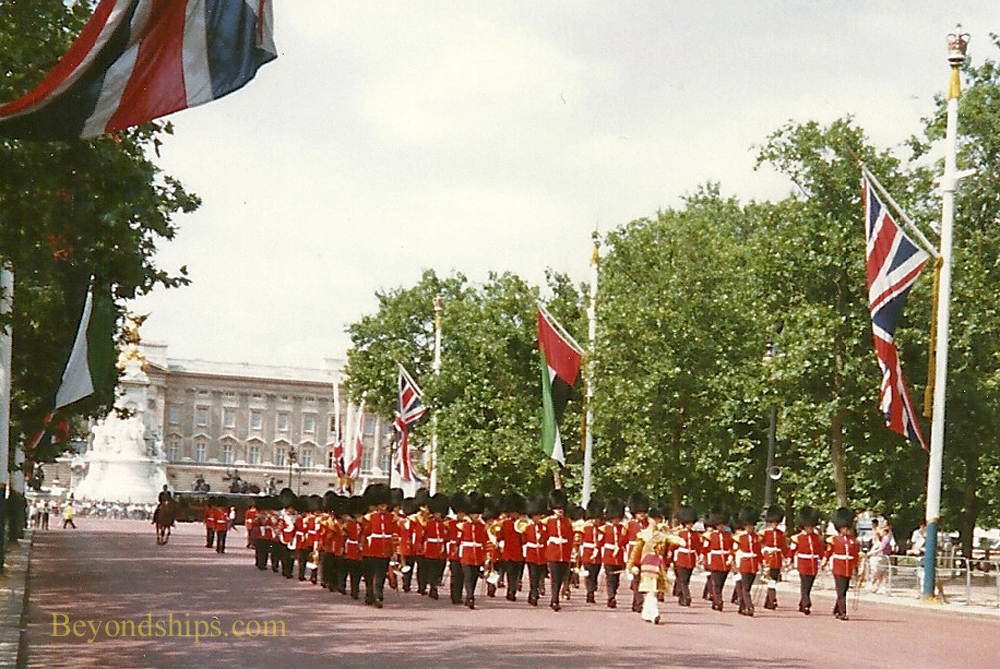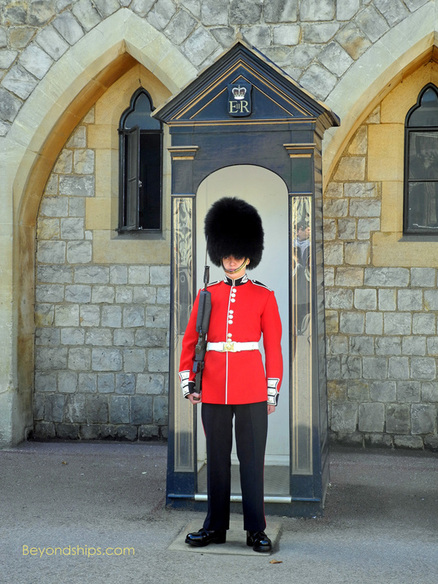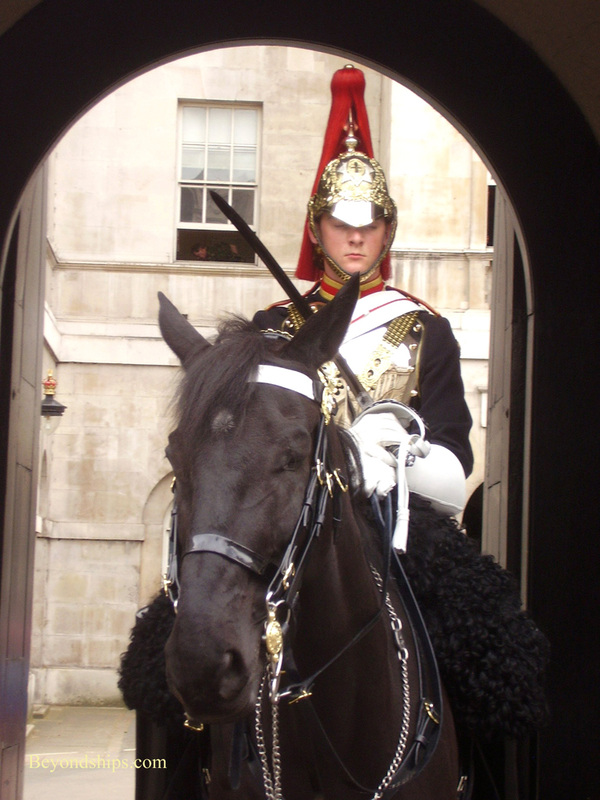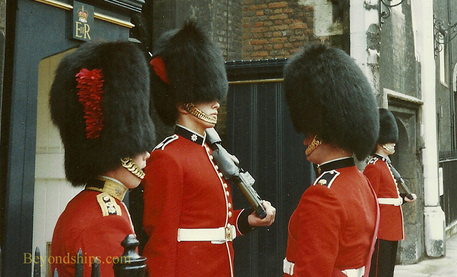|
Most people who visit London put the Changing the Guard at Buckingham Palace down on their list as a must-see. However, for many what is going on during the ceremony is something of a mystery. In addition, it is not well known that there are other places besides the Palace where you can see similar pageantry albeit on a smaller scale. This article attempts to shed some light on the topic.
Who are these people standing in front of Buckingham Palace? Some tourists assume that they are re-enactors or university students earning some extra money for playing a role. However, the fact is that they are real soldiers, collectively known as The Guards. When they are not doing ceremonial duties they are often deployed on active combat roles to places such as Afghanistan and other hot spots where the British Army is present. In fact, you can find references to Guards in just about every major conflict Britain has been involved in since the English Civil War in the mid-1600s. They were there with the Duke of Marlborough in the wars against Louis XIV, in the Crimea, in the Boer War, in both World Wars, the Falklands, Iraq and as above Afghanistan. Perhaps the Guards most remembered day was on 18 June 1815 at the Battle of Waterloo. Guards held the Chateau of Hougemont preventing Napoleon from turning the Duke of Wellington's flank. Then late in the day when Napoleon launched his Old Guard to administer what he envisioned as the final blow to the Allies, Wellington called upon the Guards to repulse them. The sight of the never-before Old Guard in retreat broke the spirit of the remainder of the French army leading to a general rout. The Guards belong to the Household Division. Within the Division are two regiments of cavalry and five regiments of foot guards (i.e. infantry). Due to various budget-cutting measures over the years these are not at present full-sized regiments. However, the structure is there if the need to expand arises. It is easy to tell which of the cavalry regiments a soldier belongs. The Life Guards wear red tunics under their silver breastplates and have white plumes on their helmets. The Blues and Royals wear blue tunics and have red plumes. There is an exception to this rule. The Life Guards' regimental farrier wears a blue tunic. The uniforms of the foot guard regiments have more subtle differences. All the regiments wear red tunics, blue trousers and a black bearskin helmet. (The helmet recalls the Guards' defeat of Napoleon's Old Guard who wore bearskin helmets). However, the Grenadier Guards have a white plume on the left side of the bearskin and the buttons on their tunics are evenly spaced. The Coldstream Guards have a red plume on the right side of the bear skin and their tunic buttons are grouped in twos signifying that they are the Second Regiment of Foot Guards. The Scots Guards have no plume and their buttons are arranged in threes as they are the Third Regiment of Foot Guards. The Irish Guards have a blue plume on the right side and as the Fourth Regiment of Foot Guards, their buttons are grouped in fours. Finally, the Welsh Guards have a green and white plume on the left side and their tunic buttons are grouped in fives. Can you guess why? Musicians have different dress codes. Above: Pipers of the Scots Guards.
Below: A trumpeter of the Life Guards. |
Above: The Guards march down The Mall in front of Buckingham Palace on a state occasion.
Above: A Scots Guard on sentry duty.
Below: A trooper of the Blues and Royals on guard duty. Above: An officer and a non-commissioned officer of the Coldstream Guards inspect a sentry.
There are other differences such as the emblems on the tunic collars but if you master the above, you should have no trouble knowing who you are looking at. By the way, you can tell a Foot Guards officer from an enlisted man by his belt. Officers wear a crimson or gold sash while enlisted men wear white belts. The officers' bearskins are also larger.
Each of the regiments has its own band of musicians. The bands play separately and sometimes together. When they are all together they are called “The Massed Bands.” The regiment which is on guard duty does not necessarily provide the musicians for that day's ceremony. Thus, you can have the Coldstream Guards on duty accompanied by the Band of the Scots Guards. Beyond their military traditions, the Guards have their own traditional lifestyle. In fact, one journalist wrote in the 1980s that the Guards “perpetuate a lifestyle most people thought went down with the Titanic.” While that is an exaggeration, Guards officers traditionally come from the upper classes and the aristocracy. It is not unusual for officers to have titles or have relatives who have titles. Prince Harry, son of the Prince of Wales, is a Guards officer. The enlisted men are often working class. The gentlemen rankers (impoverished aristocrats) sung about in old songs have faded into legend. The Guards are an elite fighting force known for their self-discipline and courage. They could not have achieved so many battle honors over the centuries without being a working partnership in which everyone performs their role to a very high standard. Such standards are evident in the way they perform their ceremonial duties. |
Cruise destination - - England - Changing of the Guard - page one
